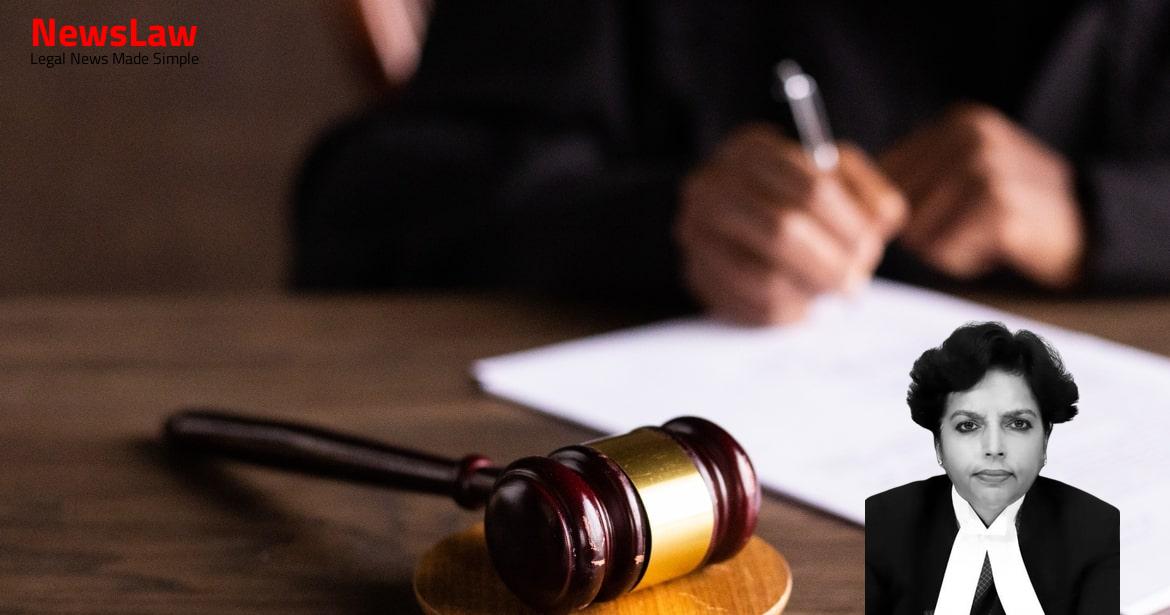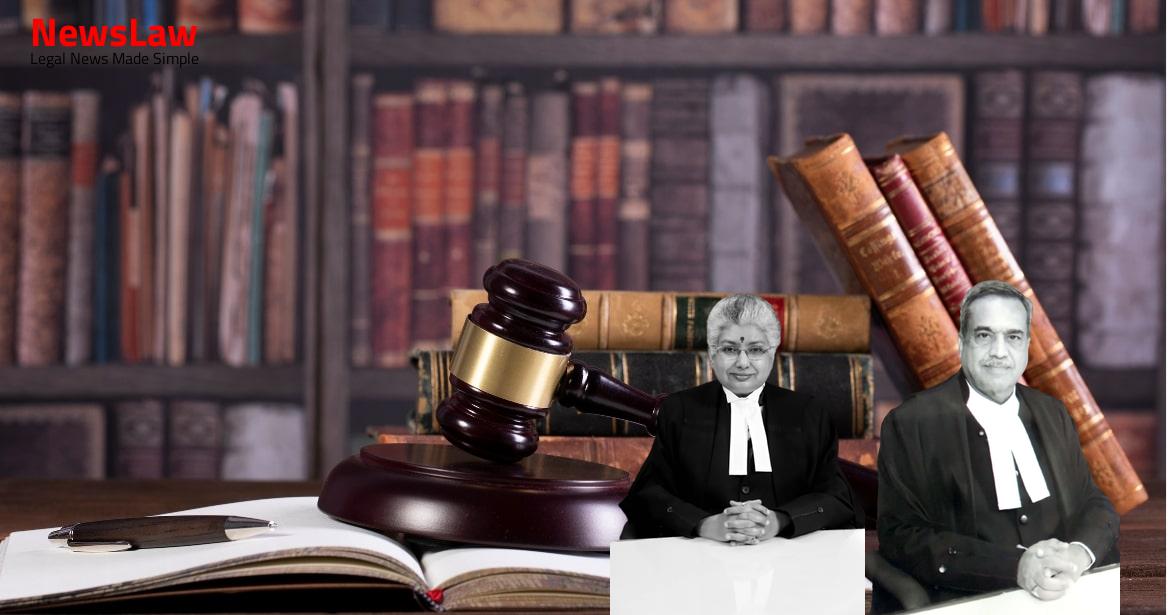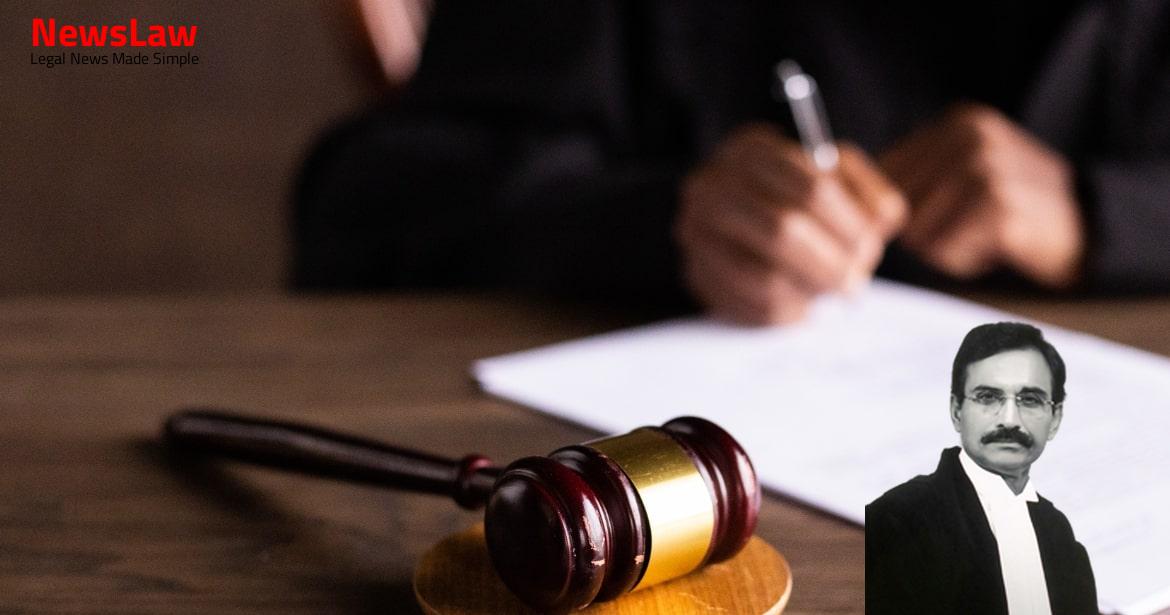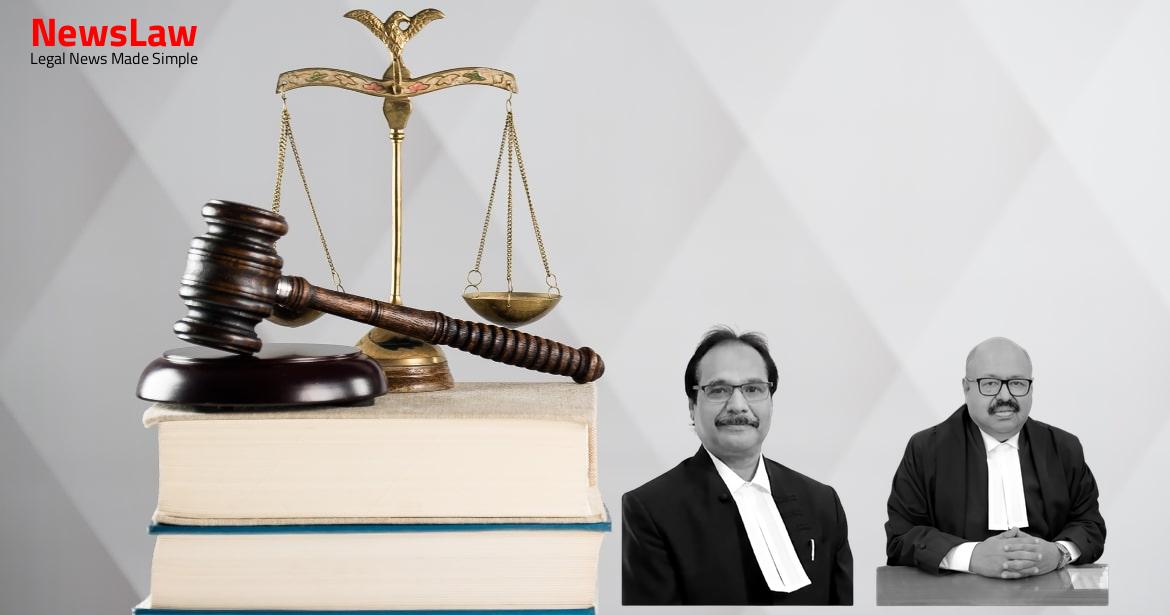Explore the intricate legal analysis conducted by the court in a recent case regarding the interpretation of the Insolvency and Bankruptcy Code and Debt Recovery Act. The judgment delves into various provisions, emphasizing the need to align statutory interpretation with the legislative intent. Understanding the implications of earlier court judgments and the interplay between different sections of the law is pivotal in upholding the statutory framework. Stay tuned for a deep dive into the legal complexities surrounding insolvency and debt recovery.
Facts
- IBHL filed civil suits against borrower entities and Corporate Debtor for recovery of amounts due.
- Application by IBHL admitted by NCLT on 20 September, 2019.
- Director of Corporate Debtor filed appeal against NCLT’s order before NCLAT.
- Proceedings involving contempt petition, Recovery Certificates, and review applications were ongoing between parties.
- KMBL filed application under Section 7 of IBC claiming amount of Rs. 835,93,52,369/- leading to initiation of CIRP against Corporate Debtor.
- Background: IBHL sanctioned credit facilities to borrower entities with Corporate Debtor standing as Corporate Guarantor/mortgagor.
- Appeal filed challenging NCLAT’s decision to allow respondent’s appeal against admission of IBHL’s application under IBC.
- Borrower entities defaulted, classified as NPAs in 1997, leading to Possession Notice and Winding Up Notice by KMBL.
- KMBL and IBHL entered into Deed of Assignment, followed by a compromise between KMBL and borrower entities.
- High Court recorded compromise, holding Corporate Debtor liable for payment to KMBL.
- KMBL issued Demand Notice under SARFAESI Act due to default in payments by borrower entities and Corporate Debtor.
- KMBL filed applications before DRT for issuance of Debt Recovery Certificates based on the compromise.
- The Trial Court, First Appellate Court, and High Court agreed that the suit was barred by res judicata based on the High Court judgment in the writ petition.
- The NCLAT, however, ruled that the appellant’s application was time-barred and that the issuance of the Recovery Certificate did not trigger the right to sue.
- The High Court held that the suit was not barred by constructive res judicata.
Also Read: Presumption of Genuine Endorsements in Cheque Case
Arguments
- Shri Guru Krishna Kumar, Senior Counsel, argued that the issue in the present case is not new.
- He emphasized the need to examine the underlying transaction leading to the Decree/Recovery Certificate to determine if it constitutes a financial debt.
- The legal essence of a judgment debt remains intact even after converting into a Recovery Certificate.
- Section 14 of the IBC prohibits suits or proceedings against the corporate debtor, including execution of judgments.
- The deeming fiction in Section 14 applies only to the initiation of winding-up proceedings.
- Arguments were similar to those presented by Shri S. Prabhakaran and Shri V. Prakash, Senior Counsel for respondent No.1.
- The SLP challenging a judgment of the Tripura High Court was dismissed by the Supreme Court.
- Relying on NCLAT’s judgment in Mukul Agarwal case, it was contended that a decree-holder with a Recovery Certificate is not a financial creditor under the IBC.
- Shri Guru Krishna Kumar supported the Dena Bank case judgment, arguing it correctly establishes the law.
- Sub-sections (22) and (22A) of Section 19 of the Debt Recovery Act were introduced by an amendment act in 2016.
- The judgment in the Dena Bank case was deemed per incuriam for not considering these amendments and relevant IBC provisions.
- The NCLAT’s decision was defended, stating that the limitation period for filing the CIRP application began in 1997 when the accounts were declared NPAs.
- A Madras High Court judgment was cited to support the view that a Recovery Certificate does not create a new cause of action.
- Interpretation of IBC was emphasized to align with its purpose, citing precedents such as Nirmal Jeet Kaur vs. State of M.P.
- It was argued that a decree-holder is not a financial creditor under IBC, pointing to the Dena Bank case decision.
- The initiation of CIRP was opposed on the grounds of res judicata and per rem judicatam.
- The limited legal fiction under Section 19(22A) of the Debt Recovery Act was detailed, highlighting the preservation of the Corporate Debtor as an ongoing concern.
- Post-November 15, 2016, Recovery Certificate holders lost the right to use it as a decree for winding-up proceedings.
- Shri Kumar argues that the claim that the judgment in Dena Bank case is per incuriam in relation to the IBC and Debt Recovery Act is unfounded.
- Shri K.V. Viswanathan contends that the Dena Bank judgment is per incuriam regarding the relevant statutes and previous judgments of the three-Judge Bench in Jignesh Shah and Gaurav Hargovindbhai Dave cases.
- The issue being of significant importance, the Court decides to delve into the arguments presented by both sides.
- Shri Kumar maintains that the decision in Dena Bank case is legally sound and should not be disturbed.
Also Read: Medical Negligence and Compensation: A Landmark Decision
Analysis
- The judgment discusses the interpretation of various provisions of the Insolvency and Bankruptcy Code (IBC) and the implications of earlier court judgments on the issue of filing applications under Section 7 of the IBC beyond the limitation period.
- It emphasizes the importance of understanding the legislative intent behind the statutes and the need to interpret provisions in a manner that aligns with the overall purpose of the legislation.
- The analysis explores the concept of ‘default’ within the context of non-payment of debts and the significance of a ‘claim’ leading to a ‘debt’, which are essential components in determining the initiation of Corporate Insolvency Resolution Process (CIRP).
- The judgment also delves into the definition of ‘financial debt’ under the IBC and how liabilities arising from a Recovery Certificate should be considered within this definition, establishing holders of such certificates as ‘financial creditors’.
- It addresses concerns regarding initiation of CIRP after the issuance of a decree or Recovery Certificate, highlighting that such events can indeed give rise to a fresh cause of action under the IBC within a specific time frame.
- The analysis scrutinizes the provisions of the IBC related to moratorium, suits, and prohibition of proceedings against corporate debtors, noting the intricate interplay between different sections to uphold the statutory framework.
- Lastly, the judgment affirms the inclusive nature of the definition clauses within the IBC, emphasizing that the specific examples mentioned are not exhaustive but illustrative of the broader scope of the law.
- The word “+includes+” when used in interpretation clauses enlarges the meaning of words or phrases in the statute.
- The use of the word “+include+” means that the words or phrases should be construed broadly to include what is declared in the interpretation clause.
- Negative words in legislation indicate mandatory provisions.
- Courts will presume that the legislature intended provisions to be mandatory when negative words are used.
- The court’s jurisdiction to interpret a statute can be invoked when the meaning is ambiguous.
- Moratorium declared on insolvency commencement date to prohibit suits or proceedings against the corporate debtor.
- The definition of ‘claim’, ‘creditor’, ‘debt’, ‘financial creditor’, and ‘financial debt’ are provided in the IBC.
- The term ‘person’ is not limited to specific categories but inclusive of all individuals, companies, and associations.
- Section 3 of the General Clauses Act defines ‘person’ broadly.
- Liabilities in respect of guarantee or indemnity are considered financial debts under the IBC.
- The Court in the case of Dena Bank relied on Vashdeo R. Bhojwani, which in turn relied on the judgment in Balakrishna Savalram Pujari Waghmare.
- Shri Viswanathan referred to paragraph 21 of the Jignesh Shah case to highlight that the suit for recovery is separate and independent from the remedy of winding-up.
- The view taken by the two-Judge Bench of this Court in the case of Dena Bank is correct in law
- The application under Section 7 of the IBC was filed within three years from the date of issue of the Recovery Certificate
Also Read: Remand of Writ Petition for Restoration and Decision on Merits
Decision
- The appeal is allowed.
- The impugned judgment and order dated 24 November, 2020 passed by the learned National Company Law Appellate Tribunal, New Delhi in Company Appeal (AT) (Insolvency) No.1406 of 2019 is quashed and set aside.
- Elaborate arguments have been advanced by the rival parties upon the merits of the matter, but the court has not touched the same.
Case Title: KOTAK MAHINDRA BANK LTD. Vs. A. BALAKRISHNAN (2022 INSC 630)
Case Number: C.A. No.-000689 / 2021



